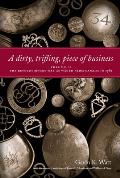

|
 |
||||||||||||||||||||||||||||||||||||||||||||||||||||||||
|
This article on Loyalist families is presented in 8 parts. Click below to skip to:
Part 1 - Introduction |
||||||||||||||||||||||||||||||||||||||||||||||||||||||||
Female Ancestors |
||||||||||||||||||||||||||||||||||||||||||||||||||||||||
|
The Women Join Their Husbands Slowly at first and then by waves, the families of Loyalist soldiers came into the army to join their husbands. With no means of support at home, made enemies by many of their neighbors and often having their homes confiscated from around them, these women had little choice but to join the army. Some, like William PARKER and his family of Williamsburg, Virginia, joined the army together, enlisting in the American Legion when Benedict ARNOLD arrived in Virginia in 1781.18 The number of women and children with the regiments grew as the war progressed. In 1777, but few could be found with the regiments around New York City. By July of 177,8 however, there were 698 women and 731 children, as compared to 5,916 men, a ratio of a little over 4 soldiers to 1 dependent.19 An examination a year later of the same corps, added to those at Savannah, Georgia, shows 929 women, 877 children and 6.022 men, decreasing the ratio even more.20 By the end of the war the numbers were startling. In April of 1782 for New York the ratio was less than 2 to 1. What is interesting is that the number of women and children numerically did not increase much, but the number of men who were with them decreased dramatically.21 For regiments on campaign, the number of women and children allowed was much more in keeping with British ratios. A return of Provincials victualled at the Siege of Charleston in early April of 1780 shows but 19 women and 9 children for 578 men. However, when we examine the Savannah Black Pioneers, there were 96 women and 74 children for 186 men. This is a great testament to the number of escaped slaves joining the army as a family.22 The Provincials who left New York to serve in the South generally left most of their families behind. In a return for April of 1781, there were 254 women and 493 children at New York for Provincials serving elsewhere, almost entirely in the South. These families were generally left under the care of an NCO's detachment and were provisioned by the Commissary General.23 A good example for examining the progression in numbers through the war is the Loyal American Regiment. If we follow their progression through the war, we see a massive influx of women and children between 1777-1778, and then proportional numbers for the remainder of the war. At times the number of dependents almost equaled the number of soldiers. The numbers are similar for other provincials stationed at New York during that period.24
18 Petition of William Parker, undated. Great Britain, Public Record office, Audit Office, Class 13, Volume 32, folio 239.
Click here for ---> Female Ancestors Main Page Refugees & Others: Loyalist Families
The On-Line Institute for Advanced Loyalist Studies Copyright Restrictions Document Formatting Optimal Viewing |
||||||||||||||||||||||||||||||||||||||||||||||||||||||||
 by Angela Elwell HuntHardcover
by Angela Elwell HuntHardcover